BIHAR STATE (VIKASCREATION)
Bihar
Bihar
| |
|---|---|
|
Clockwise from top: Great Buddha Statue at Bodh Gaya, ruins of ancient Nalanda University, Madhubani painting from Mithila region, Brahma Kund hot springs in Rajgir
| |
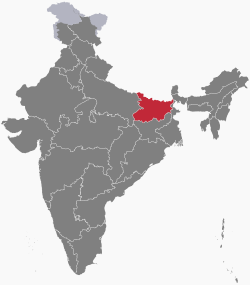
Location of Bihar in India
| |
| Coordinates (Patna): 25.4°N 85.1°ECoordinates: 25.4°N 85.1°E | |
| Country | India |
| Formation |
|
| Statehood | 26 January 1950 |
| Capital | Patna |
| Largest city | Patna |
| Districts | 38 |
| Government | |
| • Governor | Phagu Chauhan (BJP)[1] |
| • Chief Minister | Nitish Kumar (JD(U)) |
| • Deputy Chief Minister | Sushil Kumar Modi[2] (BJP) |
| • Legislature | |
| • High Court | Patna High Court |
| Area | |
| • Total | 94,163 km2 (36,357 sq mi) |
| Area rank | 12th |
| Population
(2011)[4]
| |
| • Total | 103,804,637 |
| • Rank | 3rd |
| • Density | 1,102/km2 (2,850/sq mi) |
| • Major Ethnolinguistic Groups | Bhojpuris, Maithils, Magahis |
| Demonym(s) | Bihari |
| GDP (2017–18) | |
| • Total | ₹4.88 lakh crore (US$68 billion) |
| • Per capita | ₹38,860 (US$540) |
| Languages | |
| • Official | Hindi[6] |
| • Additional official | Maithilia,[7] Urdub [8] |
| Time zone | UTC+05:30 (IST) |
| UN/LOCODE | INBR |
| ISO 3166 code | IN-BR |
| Vehicle registration | BR |
| HDI (2017) | |
| Literacy (2011) | 63.82%[10] |
| Sex ratio (2011) | 918 ♀/1000 ♂[11] |
| Website | gov |
| |
Bihar (/bɪˈhɑːr/; Hindi pronunciation: [bɪˈɦaːr] ( listen)) is a state in eastern India. It is the third-largest state by population and twelfth-largest by territory, with an area of 94,163 km2 (36,357 sq mi). It is contiguous with Uttar Pradesh to its west, Nepal to the north, the northern part of West Bengal to the east, and with Jharkhand to the south. The Bihar plain is split by the river Ganges, which flows from west to east.[12] Three main cultural regions converge in the state: Magadh, Mithila, and Bhojpur.[13]
listen)) is a state in eastern India. It is the third-largest state by population and twelfth-largest by territory, with an area of 94,163 km2 (36,357 sq mi). It is contiguous with Uttar Pradesh to its west, Nepal to the north, the northern part of West Bengal to the east, and with Jharkhand to the south. The Bihar plain is split by the river Ganges, which flows from west to east.[12] Three main cultural regions converge in the state: Magadh, Mithila, and Bhojpur.[13]
On 15 November 2000, southern Bihar was ceded to form the new state of Jharkhand.[14] Only 11.3% of the population of Bihar lives in urban areas, which is the lowest in India after Himachal Pradesh.[15] Additionally, almost 58% of Biharis are below the age of 25, giving Bihar the highest proportion of young people of any Indian state.[16]
In ancient and classical India, the area that is now Bihar was considered a centre of power, learning, and culture.[17] From Magadha arose India's first empire, the Maurya empire, as well as one of the world's most widely adhered-to religions: Buddhism.[18] Magadha empires, notably under the Maurya and Gupta dynasties, unified large parts of South Asia under a central rule.[19] Another region of Bihar is Mithila which was an early centre of learning and the centre of the Videha kingdom.[20][21]
Since the late 1970s, Bihar has lagged far behind other Indian states in terms of social and economic development.[22][23][24] Many economists and social scientists claim that this is a direct result of the policies of the central government, such as the freight equalization policy,[25][26] its apathy towards Bihar,[16][27][28] lack of Bihari sub-nationalism,[26][29][30] and the Permanent Settlement of 1793 by the British East India Company.[26] The state government has, however, made significant strides in developing the state.[31] Improved governance has led to an economic revival in the state through increased investment in infrastructure,[32] better health care facilities, greater emphasis on education, and a reduction in crime and corruption.[33][34]
Contents
Etymology
The name Bihar is derived from the Sanskrit and Pali word vihāra (Devanagari: विहार), meaning "abode". The region roughly encompassing the present state had many Buddhist vihāras, the abodes of Buddhist monks in the ancient and medieval periods. Medieval writer Minhaj al-Siraj Juzjani records in the Tabaqat-i Nasiri that in 1198 Bakhtiyar Khalji committed a massacre in a town identified with the word, later known as Bihar Sharif, about 70 km (43 mi) away from Bodh Gaya.[35][36]
History
Ancient period
Chirand, on the northern bank of the Ganga River, in Saran district, has an archaeological record from the Neolithic age (c. 2500–1345 BC).[37][38] Regions of Bihar – such as Magadha, Mithila and Anga – are mentioned in religious texts and epics of ancient India.
Mithila gained prominence after the establishment of the Videha Kingdom.[39][40] During the late Vedic period (c. 1100–500 BCE), Videha became one of the major political and cultural centers of South Asia, along with Kuru and Pañcāla. The kings of the Videha Kingdom were called Janakas.[41] Sita, a daughter of one of the Janaks of Mithila is mentioned as the consort of Lord Rama, in the Hindu epic Ramayana, written by Valmiki.[39][42][page needed] The Videha Kingdom later became incorporated into the Vajji confederacy which had its capital in the city of Vaishali, which is also in Mithila.[43] Vajji had a republican form of government where the king was elected from the rajas. Based on the information found in texts pertaining to Jainism and Buddhism, Vajji was established as a republic by the 6th century BCE, before the birth of Gautama Buddha in 563 BCE, making it the first known republic in India.
The Haryanka dynasty, founded in 684 BC, ruled Magadha from the city of Rajgriha (modern Rajgir). The two well-known kings from this dynasty were Bimbisara and his son Ajatashatru, who imprisoned his father to ascend the throne. Ajatashatru founded the city of Pataliputra which later became the capital of Magadha. He declared war and conquered the Vajji. The Haryanka dynasty was followed by the Shishunaga dynasty. Later, the Nanda Dynasty ruled a vast tract stretching from Bengal to Punjab.
The Nanda dynasty was replaced by the Maurya Empire, India's first empire. The Maurya Empire and the religion of Buddhism arose in the region that now makes up modern Bihar. The Mauryan Empire, which originated from Magadha in 325 BC, was founded by Chandragupta Maurya, who was born in Magadha. It had its capital at Pataliputra (modern Patna). Mauryan emperor Ashoka, who was born in Pataliputra (Patna), is often considered to be among the most accomplished rulers in world history.[44][45]
The Gupta Empire, which originated in Magadha in 240 AD, is referred as the Golden Age of India in science, mathematics, astronomy, commerce, religion, and Indian philosophy.[46] Bihar and Bengal was invaded by Rajendra Chola I of the Chola dynasty in the 11th century.[47][48]
Medieval period
Buddhism in Magadha went into decline due to the invasion of Muhammad bin Bakhtiyar Khalji, during which many of the viharas were destroyed along with the universities of Nalanda and Vikramashila. Some historians believe that thousands of Buddhist monks were massacred during the 12th century.[49][50][51][52] D. N. Jha suggests, instead, that these incidents were the result of Buddhist–Brahmin skirmishes in a fight for supremacy.[53] After the fall of the Pala Empire, the Chero dynasty ruled some parts of Bihar from the 12th century until Mughal rule in the 16th century.[54] In 1540, the great Pathan chieftain, Sher Shah Suri, took northern India from the Mughals and declared Delhi his capital.
From the 11th century to the 20th century, Mithila was ruled by various indigenous dynasties. The first of these were the Karnatas, followed by the Oiniwar dynasty and Raj Darbhanga.[55] It was during this period that the capital of Mithila was shifted to Darbhanga.[56][57]
The tenth and the last guru of Sikhism, Guru Gobind Singh, was born in Patna in 1666. With political instability in the Mughal Empire following Aurangzeb's death in 1707, Murshid Quli Khan declared Bengal's independence and named himself Nawab of Bengal.
Colonial era
After the Battle of Buxar (1764), the British East India Company obtained the diwani rights (rights to administer and collect tax revenue) for Bihar, Bengal and Odisha. The rich resources of fertile land, water and skilled labour had attracted the foreign imperialists, particularly the Dutch and British, in the 18th century. A number of agriculture-based industries had been started in Bihar by foreign entrepreneurs.[58] Bihar remained a part of the Bengal Presidency of British India until 1912, when Bihar and Orissa was carved out as a separate province.
Pre- and post-Independence
Farmers in Champaran had revolted against indigo cultivation in 1914 (at Pipra) and 1916 (Turkaulia). In April 1917, Mahatma Gandhi visited Champaran, where Raj Kumar Shukla had drawn his attention to the exploitation of the peasants by European indigo planters. The Champaran Satyagraha that followed received support from many Bihari nationalists, such as Rajendra Prasad and Anugrah Narayan Sinha.[59][60]
In the northern and central regions of Bihar, the Kisan Sabha (peasant movement) was an important consequence of the independence movement. It began in 1929 under the leadership of Swami Sahajanand Saraswati who formed the Bihar Provincial Kisan Sabha (BPKS), to mobilise peasant grievances against the zamindari attacks on their occupancy rights. The movement intensified and spread from Bihar across the rest of India, culminating in the formation of the All India Kisan Sabha (AIKS) at the Lucknow session of the Indian National Congress in April 1936, where Saraswati was elected as its first president.[61]
Following independence, Bihari migrant workers have faced violence and prejudice in many parts of India, such as Maharashtra, Punjab and Assam.[62][63]
Geography and climate
This section does not cite any sources. (January 2020) (Learn how and when to remove this template message)
|
| Climate | |
|---|---|
| Classification | Cwa |
| Avg. daily high | 27 °C (81 °F) |
| • Summer | 34 °C (93 °F) |
| • Winter | 10 °C (50 °F) |
| Precipitation | 1,200 mm (47 in) |
Bihar covers a total area of 94,163 km2 (36,357 sq mi), with an average elevation above sea level of 173 feet (53 m). It is dominated by a vast stretch of fertile plain which is divided unevenly by the Ganges River. Central parts of Bihar have some small hills, such as the Rajgir hills.
Though the foothills of the Himalayas begin in Nepal, a short distance to the north, these mountains influence Bihar's landforms, climate and hydrology. Along with the Chota Nagpur plateau in Jharkhand to the south, these give Bihar a diverse climate. Its temperature is subtropical in general, with hot summers and cold winters.
The Ganges flows west–east and, along with its tributaries, regularly floods parts of the Bihar plain. The main northern tributaries are the Gandak and Koshi, which originate in the Nepalese Himalayas, and the Bagmati, which originates in the Kathmandu Valley. Other tributaries are the Son, Budhi Gandak, Chandan, Orhani and Phalgu.
Flora and fauna
Bihar has reserved forest area of 6,845 km2 (2,643 sq mi), which is 7.27% of its geographical area.[64] The sub-Himalayan foothill of Someshwar and the Dun ranges in the Champaran district have belts of moist deciduous forests, mixed with shrubs, grass and reeds. High rainfall (above 1,600 mm [63 in]) promotes forests of Sal (Shorea robusta) in these areas. Other important trees are Sal Cedrela Toona, Khair, and Semal. Deciduous forests also occur in the Saharsa and Purnia districts,[65] with common trees including Shorea robusta (sal), Diospyros melanoxylon (kendu), Boswellia serrata (salai), Terminalia tomentose (asan), Terminalia bellerica (bahera), Terminalia Arjuna (arjun), Pterocarpus marsupium (paisar), and Madhuca indica (mahua).
Valmiki National Park covers about 800 km2 (309 sq mi) of forest and is the 18th Tiger Reserve of India, ranked fourth in terms of density of tiger population.[66] It has a diverse landscape and biodiversity in addition to sheltering the protected carnivores. Vikramshila Gangetic Dolphin Sanctuary in Bhagalpur region is a reserve for the endangered South Asian river dolphin.[64] Karkatgarh Waterfall on Karmanasa River is a natural habitat of crocodiles. In 2016, the government of Bihar has accepted the proposal of the forest authorities to turn the place into a Crocodile Conservation Reserve (CCR).[67] Other notable wildlife sanctuaries include Kaimur Wildlife Sanctuary, Bhimbandh Wildlife Sanctuary and Gautam Buddha Wildlife Sanctuary.
Other species in Bihar include leopard, bear, hyena, bison, chital and barking deer. Crocodiles (including muggers) and Gangetic turtles can be found in the river systems. Many varieties of local and migratory bird species can be seen in natural wetlands of Kanwar Lake Bird Sanctuary, Baraila lake, Kusheshwar Nath Lake, Udaypur lake. Nagi Dam and Nakti Dam have been declared as bird sanctuaries.[64]
Demographics
| showPopulation growth |
|---|
At the 2011 Census, Bihar was the third most populous state of India with total population of 104,099,452, nearly 89% of it rural. It was also India's most densely populated state, with 1,106 persons per square kilometre. The sex ratio was 918 females per 1000 males.[70] Almost 58% of Bihar's population was below 25 years age, which is the highest in India. At 11.3%, Bihar has the second-lowest urbanisation rate in India.[71]
Most of Bihar's population belongs to Indo-Aryan-speaking ethnic groups, along with few Dravidian-speaking and Austroasiatic-speaking people, mostly in Chhotanagpur Plateau (now part of Jharkhand). It also attracted Punjabi Hindu refugees during the Partition of British India in 1947.[72] Bihar has a total literacy rate of 63.82% (73.39% for males and 53.33% for females), recording a growth of 20% in female literacy over the preceding decade.[10] According to the 2011 census, 82.7% of Bihar's population practised Hinduism, while 16.9% followed Islam.[73][74]
Government and administration
The constitutional head of the government of Bihar is the governor, who is appointed by the President of India. Executive power rests with the chief minister and their cabinet. The political party or coalition of political parties having a majority in the Legislative Assembly forms the government.
The head of the bureaucracy of the state is the chief secretary, under whom a hierarchy of officials is drawn from the Indian Administrative Service, Indian Police Service, Indian Forest Service, and different wings of the state civil services. The judiciary is headed by the Chief Justice. Bihar has a High Court which has been functioning since 1916. All the branches of the government are located in the state capital, Patna.
The state is administratively divided into 9 divisions and 38 districts. Bihar has 12 municipal corporations, 49 nagar parishads (city councils), and 80 nagar panchayats (town councils).[75][76][77][78][79]
Politics
- See also: Political parties in Bihar, Elections in Bihar and List of politicians from Bihar; 2015 Bihar Legislative Assembly election
By 2004, The Economist magazine said that "Bihar [had] become a byword for the worst of India, of widespread and inescapable poverty, of corrupt politicians indistinguishable from mafia-dons they patronise, caste-ridden social order that has retained the worst feudal cruelties".[80] In 2005, the World Bank believed that issues faced by the state were "enormous" because of "persistent poverty, complex social stratification, unsatisfactory infrastructure and weak governance".[81] As of 2014, there are two main political formations: the National Democratic Alliance (NDA) which comprises Bharatiya Janata Party (BJP, Indian People's Party), Lok Janashakti Party (LJP), Rashtriya Lok Samta Party (RLSP, National People's Equality Party), Hindustani Awam Morcha (HAM, Indian Peoples Front) and Janata Dal (United) (JD[U]); and a second alliance between Rashtriya Janata Dal (RJD, National People's Party) and Indian National Congress (INC). There are many other political formations. The Communist Party of India had a strong presence in Bihar at one time, which has since weakened.[82] The Communist Party of India (Marxist) (CPI[M]) and CPM and All India Forward Bloc (AIFB) have a minor presence, along with the other extreme leftist parties.[83]
Nitish Kumar has been chief minister of Bihar for 13 years between 2005 and 2020. In contrast to prior governments, which emphasized divisions of caste and religion, his political platform was based on economic development, reduction of crime and corruption, and greater social equality. Since 2010, the government confiscated the properties of corrupt officials and redeployed them as schools buildings.[84] They also introduced Bihar Special Court Act to curb crime.[85] It also legislated a two-hour lunch break on Fridays, to enable Muslim employees to pray and thereby reduce absenteeism.[86] The government has prohibited the sale and consumption of alcohol in the state since March 2016,[87] which has been linked to a drop in tourism[88] and a rise in substance abuse.[89]
Public health
Bihar generally ranks weakest in health outcomes in comparison to other Indian states.[90][91] While the National Health Mission, the Clinical Establishments Act of 2010, and the formation of the Empowered Action Group (EAG)[92] provide federal funds to expand and improve healthcare services, Bihar's ability to fully utilize this funding is lacking.[90][91]
Research indicates that Bihar relies on privatized hospitals to provide healthcare to the masses, with the second-highest ratio among Indian states for private to public spending and high levels of corruption.[90] These factors are associated with slower healthcare delivery and steep healthcare costs.[93][94][95][96] Corruption is enabled as Bihar lacks continuity and transparency of health reporting as required by the Clinical Establishments Act of 2010. In turn, this prevents the government from making evidence-based conclusions about policy changes and hospital effectiveness, resulting in patterns of ill-informed spending and inconsistent hiring.
When comparing Bihar to Kerala, the number of healthcare professionals (including registered nurses, auxiliary nurses, physicians and health supervisors) at each hospital are significantly lower, and remain constant over time while they steadily increase in number in Kerala.[97] According to Ministry of Health statistics, the greatest shortfalls are for physicians and specialists at 75%.[90] Bihar has only 50% of the sub-health centres, 60% of the primary health centres, and 9% of the community health centres required by the national supply-to-population standards. The number of public hospital beds in Bihar decreased between 2008 and 2015.[97] Given the high population density of the state, Bihar is significantly behind in the number of healthcare professionals that should be employed.[98][97] Despite these shortcomings, Bihar has shown gradual signs of improvement for female health workers,[90] death rate, and infant, neo-natal, child and maternal morality rates.[90]
Economy
| Year | Gross State Domestic Product (millions of rupees)[99] |
|---|---|
| 1980 |
73,530
|
| 1985 |
142,950
|
| 1990 |
264,290
|
| 1995 |
244,830
|
| 2000 |
469,430
|
| 2005 |
710,060
[100] |
| 2010 |
2,042,890
[citation needed] |
| 2015 |
3,694,690
[citation needed] |
Bihar's gross state domestic product (GSDP)for fiscal year (FY) 2013–14 was around ₹3,683.37 billion. By sectors, its composition is 22% agriculture, 5% industry and 73% services.[citation needed] Bihar has the fastest-growing state economy in terms of GSDP, with a growth rate of 17.06% in FY 2014–15.[102] The economy of Bihar was projected to grow at a compound annual growth rate (CAGR) of 13.4% during 2012–2017 (the 12th Five-Year Plan). Bihar has experienced strong growth in per capita net state domestic product (NSDP). At current prices, per capita NSDP of the state grew at a CAGR of 12.91% from 2004–05 to 2014–15.[103] Bihar's per capita income went up by 40.6% in FY 2014–15.[104] The state's debt was estimated at 77% of GDP by 2007.[105]
Agriculture
Among the states of India, Bihar is the fourth-largest producer of vegetables and the eighth-largest producer of fruits. About 80% of the state's population is employed in agriculture, which is above the national average.[103] The main agricultural products are litchi, guava, mango, pineapple, brinjal, lady's finger, cauliflower, cabbage, rice, wheat, sugarcane, and sunflower. Though good soil and favourable climatic conditions favour agriculture, this can be hampered by floods and soil erosion.[106] Southern parts of the state dace annual droughts, affecting crops such as paddy.[107]
Industry
Hajipur, Dalmianagar and Barauni are the major industrial cities in Bihar[108] The capital city, Patna, is one of the better-off cities in India when measured by per capita income.[relevant? ][109]^
The Finance Ministry has sought to create investment opportunities for big industrial houses like Reliance Industries. Further developments have taken place in the growth of small industries, improvements in IT infrastructure, a software park in Patna, Darbhanga, Bhagalpur,[110] and the completion of the expressway from the Purvanchal border through Bihar to Jharkhand. In August 2008, a Patna-registered company called the Security and Intelligence Services[111] took over the Australian guard and mobile patrol services business of American conglomerate, United Technologies Corporation (UTC). SIS is registered and taxed in Bihar.[112][relevant? ]
Prior to prohibition, Bihar emerged as a brewery hub with numerous production units.[113] In August 2018, United Breweries Limited announced it would begin production of non-alcoholic beer at its previously defunct brewery in Bihar.[114][115]
Services
Income distribution
In terms of income, the districts of Patna, Munger, and Begusarai placed highest among the 38 districts in the state, recording the highest per capita gross district domestic product of ₹31,441, ₹10,087 and ₹9,312, respectively, in FY 2004–05.[109]
Culture
Language and literature
Hindi is the official language of the state.[6] Urdu is the second official language in 15 districts of the state.[8] Maithili (including its dialect Bajjika), Bhojpuri, Angika and Magahi are also widely spoken.[116][117] Maithili is a recognised regional language of India under the Eighth Schedule to the Constitution of India.[7] Proponents have called for Bhojpuri and Magahi to receive the same status.[118]
Paintings
There are several traditional styles of painting practiced in Bihar. One is Mithila painting, a style used in the Mithila region of Bihar. Traditionally, this form was practiced mainly by women, passed down generation to generation. Painting was usually done on walls during festivals, religious events, births, marriages, and other cultural milestones.[119] It was traditionally done on the plastered walls of mud huts, and is also done on cloth, handmade paper and canvas. Famous Mithila painters include Smt Bharti Dayal, Mahasundari Devi, the late Ganga Devi, and Sita Devi.
Mithila painting is also called Madhubani art. It mostly depicts human beings and their association with nature. Common scenes illustrate deities and Saraswati from ancient epics, celestial objects, and religious plants like Tulsi, and scenes from the royal court and social events. Generally, no space is left empty.[119]
The Patna School of Painting (Patna Salaam), sometimes called "Company Painting", flourished in Bihar during the early 18th to mid-20th centuries. It was an offshoot of the Mughal Miniature School of Painting. Those who practiced this art form were descendants of Hindu artisans of Mughal painting. Facing persecution from the Mughal Emperor, Aurangzeb, these artisans found refuge, via Murshidabad, in Patna during the late 18th century. Their art shared the characteristics of the Mughal painters, expanded subject matter from court scenes to bazaar scenes, daily life and ceremonies. They used watercolours on paper and on mica. This school of painting formed the basis for the formation of the Patna Art School under the leadership of Shri Radha Mohan. The school is an important centre of the fine arts in Bihar.
Performing arts
Bihar has produced musicians like Bharat Ratna, Ustad Bismillah Khan and dhrupad singers like the Malliks (Darbhanga Gharana) and the Mishras (Bettiah Gharana), along with poets like Vidyapati Thakur who contributed to Maithili music. The classical music in Bihar is a form of Hindustani classical music.[citation needed]
Gaya is another centre of classical music, particularly of the Tappa and Thumri varieties. Pandit Govardhan Mishra – son of the Ram Prasad Mishra, himself an accomplished singer – is perhaps the finest living exponent of Tappa singing in India, according to Padma Shri Gajendra Narayan Singh, founding secretary of the Sangeet Natak Academi of Bihar[citation needed].
Gajendra Narayan Singh also writes, in his memoir, that Champanagar, Banaili, was another major centre of classical music. Rajkumar Shyamanand Sinha of Champanagar, Banaili princely state, was a great patron of music and was himself one of the finest exponents of classical vocal music in Bihar in his time.[120] Singh, in another book on Indian classical music, wrote that "Kumar Shyamanand Singh of Banaili estate had such expertise in singing that many great singers including Kesarbai Kerkar acknowledged his ability. After listening to bandishes from Kumar Sahib, Pandit Jasraj was moved to tears and lamented that, alas, he did not have such ability himself." [free translation of Hindi text].[121][122]
During the 19th century, many Biharis emigrated as indentured labourers to the West Indies, Fiji, and Mauritius. During this time many sad plays and songs called birha became popular in the Bhojpur region, as Bhojpuri Birha. Dramas incorporating this theme continue to be popular in the theatres of Patna.[123][better source needed]
Cinema
Bihar has a robust Bhojpuri-language film industry. There is also a smaller production of Magadhi-, Maithili- and Angika-language films. The first film with Bhojpuri dialogue was Ganga Jamuna, released in 1961.[124] Bhaiyaa, the first Magadhi film, was released in 1961.[125] The first Maithili movie was Kanyadan released in 1965.[126] Maithili film Mithila Makhaan won the National Film Award for Best Maithili Film in 2016.[127] The history of films entirely in Bhojpuri begins in 1962 with the well-received film Ganga Maiyya Tohe Piyari Chadhaibo ("Mother Ganges, I will offer you a yellow sari"), which was directed by Kundan Kumar.[128] 1963's Lagi nahin chute ram was the all-time hit Bhojpuri film, and had higher attendance than Mughal-e-Azam in the eastern and northern regions of India. Bollywood's Nadiya Ke Paar is another well-known Bhojpuri-language movie. Films such as Bidesiya ("Foreigner", 1963, directed by S. N. Tripathi) and Ganga ("Ganges", 1965, directed by Kundan Kumar) were profitable and popular, but in general Bhojpuri films were not commonly produced in the 1960s and 1970s.
In the 1980s, enough Bhojpuri films were produced to support a dedicated industry. Films such as Mai ("Mom", 1989, directed by Rajkumar Sharma) and Hamar Bhauji ("My Brother's Wife", 1983, directed by Kalpataru) had success at the box office. However, this trend faded during the 1990s.[129]
In 2001, Bhojpuri films regained popularity with Saiyyan Hamar ("My Sweetheart", directed by Mohan Prasad), which raised actor Ravi Kishan to prominence.[130] Several other commercially successful films followed, including Panditji Batai Na Biyah Kab Hoi ("Priest, tell me when I will marry", 2005, directed by Mohan Prasad) and Sasura Bada Paisa Wala ("My father-in-law, the rich guy", 2005). These films did much better business in Uttar Pradesh and Bihar than mainstream Bollywood hits at the time, and were both made on extremely tight budgets.[131] Sasura Bada Paisa Wala also introduced Manoj Tiwari, formerly a well-loved folk singer, to the wider audiences of Bhojpuri cinema. The success of Ravi Kishan and Manoj Tiwari's films led to a revival in Bhojpuri cinema, and the industry began to support an awards show[132] and trade magazine Bhojpuri City.[133] The industry produces over one hundred films per year.[citation needed]
Religion
Hindu Goddess Sita, the consort of Lord Rama, is believed to have been born in Sitamarhi district in the Mithila region of modern-day Bihar.[134][135] Gautama Buddha attained Enlightenment at Bodh Gaya, a town located in the modern day district of Gaya in Bihar. Vasupujya, the 12th Jain Tirthankara was born in Champapuri, Bhagalpur. Vardhamana Mahavira, the 24th and last Tirthankara of Jainism, was born in Vaishali around the 6th century BC.[136]
Media
Biharbandhu was the first Hindi newspaper published in Bihar. It was started in 1872 by Madan Mohan Bhatta, a Marathi Brahman who settled in Bihar Sharif.[138] Hindi journalism often failed[139] until it became an official language in the state. Hindi was introduced in the law courts in Bihar in 1880.[138][140]
Urdu journalism and poetry has a long history in Bihar, with many poets such as Shaad Azimabadi, Kaif Azimabadi, and Kalim Ajiz. Bihar publishes many Urdu dailies, such as Qomi Tanzim and Sahara, and the monthly Voice of Bihar.[citation needed]
The beginning of the 20th century was marked by a number of notable new publications. A monthly magazine named Bharat Ratna was started in Patna, in 1901. It was followed by Ksahtriya Hitaishi, Aryavarta from Dinapure, Udyoga, and Chaitanya Chandrika.[141] Udyog was edited by Vijyaanand Tripathy, a famous poet of the time, and Chaitanya Chandrika by Krishna Chaitanya Goswami, a literary figure of that time. The literary activity was not confined to Patna alone but to other districts of Bihar.[138][142]
Transport
Airways
Bihar has two operational airports: Lok Nayak Jayaprakash Airport, Patna; and Gaya Airport.
Inland Waterways
The Ganges is navigable throughout the year, and was the principal river highway across the vast Indo-Gangetic Plain. Vessels capable of accommodating five hundred merchants were known to ply this river in the ancient period, when it served as a conduit for overseas trade. The role of the Ganges as a channel for trade was enhanced by its natural links to major rivers and streams in north and south Bihar.[143]
Tourism
The culture and heritage of Bihar can be observed from the large number of ancient monuments spread throughout the state. Bihar is visited by many tourists from around the world,[144] with about 24 million tourists visiting the state each year.[144]
In earlier days, tourism in the region was purely based on educational tourism, as Bihar was home of some prominent ancient universities like Nalanda and Vikramashila.[145][146][relevant? ]
Education
Historically, Bihar has been a major centre of learning, home to the ancient universities of Nalanda (est. 450 CE), Odantapurā (est. 550 CE) and Vikramashila (est. 783 CE).[147] Bihar saw a revival of its education system during the later part of the British rule, when Patna University, the seventh oldest university of the Indian subcontinent, was established in 1917.[148] Some other centres of high learning established under British rule are Patna College (est. 1839), Bihar School of Engineering (est. 1900; now known as National Institute of Technology, Patna), Prince of Wales Medical College (est. 1925; now Patna Medical College and Hospital), Science College, Patna (est. 1928), Patna Women's College, Bihar Veterinary College (est. 1927), and Imperial Agriculture Research Institute (est. 1905; now Dr. Rajendra Prasad Central Agriculture University, Pusa)
A recent survey by Pratham rated the receptivity of Bihari children to their teaching as being better than those in other states.[149] Bihar is striving to increase female literacy, now at 53.3%. At the time of independence, women's literacy in Bihar was 4.22%.
| Year | Total | Males | Females |
|---|---|---|---|
| 1961 | 21.95 | 35.85 | 8.11 |
| 1971 | 23.17 | 35.86 | 9.86 |
| 1981 | 32.32 | 47.11 | 16.61 |
| 1991 | 37.49 | 51.37 | 21.99 |
| 2001 | 47.53 | 60.32 | 33.57 |
| 2011 | 63.82 | 73.39 | 53.33 |
Government colleges are located at Muzaffarpur, Bhagalpur, Gaya, Darbhanga, Motihari, Nalanda, and Saran (Chhapra). All institutes are recognised by All India Council for Technical Education (AICTE), affiliated with Aryabhatta Knowledge University (AKU). An eighth state engineering college began construction in December 2013 at Begusarai,[151][152] while two others are planned at Madhepura and Sitamarhi.[153][154][needs update]
Bihar established several new educational institutes between 2006 and 2008. BIT Mesra started its Patna extension centre in September 2006. On 8 August 2008, Indian Institutes of Technology Patna was inaugurated with students from all over India[155] In 2008, NSIT opened its new college in Bihta, which is now emerging as an education hub.[156][157] BCE, Bhagalpur, MIT, Muzaffarpur, and the National Institute of Pharmaceutical Education and Research, Hajipur (NIPER)[158] are in Bihar. On 4 August 2008, National Institute of Fashion Technology Patna was established as the ninth such institute in India.[159] Chanakya National Law University and Chandragupt Institute of Management were established in the later half of 2008. Steps are being taken to revive the ancient Nalanda Mahavihara as Nalanda International University. Countries such as Japan, Korea, and China have also taken initiatives. The A.N. Sinha Institute[160] of Social Studies is a premier research institute in the state.
Bihar e-Governance Services & Technologies (BeST) and the government of Bihar have initiated a unique program to establish a centre of excellence called Bihar Knowledge Center, a finishing school to equip students with the latest skills and customised short-term training programs at an affordable cost. The centre aims to attract the youth of the state to improve their technical, professional, and soft skills, to meet the current requirements of the industrial job market.[161]
Bihar has a National Institute of Technology (NIT) and an Indian Institute of Technology (IIT) in Patna. The National Employability Report of Engineering Graduates, 2014,[162] puts graduates from Bihar in the top 25 percent of the country, and rates Bihar as one of the three top states at producing engineering graduates in terms of quality and employability.[163] As of December 2013, there are seven government engineering colleges in the public sector, and 12 engineering colleges in the private sector, besides government-aided BIT Patna and Women's Institute of Technology, Darbhanga. The overall annual intake of students of these technical institutes in Bihar is only 6,200.[164][165][166]
NIT Patna is the second oldest engineering college of India. Its origin can be traced to 1886, with the establishment of a survey training school, subsequently renamed Bihar College of Engineering in 1932. In 2004, the government of India upgraded the college to National Institute of Technology (NIT) status. In 2007, NIT Patna was granted Institute of National Importance status, in accordance with the National Institutes of Technology Act, 2007. The State Government is setting up an Information Technology (IT) City at Rajgir in Nalanda district.[167] Additionally, India's first Media Hub is also proposed to be set up in Bihar.[168][needs update]
Bihar has the Central Institute of Plastic Engineering & Technology (CIPET) and the Institute of Hotel Management (a central government unit) in Hajipur. The Central University of Bihar (CUB) is one of the sixteen central universities newly established by the Government of India under the Central Universities Act, 2009 (Section 25 of 2009). The university is temporarily located on the premises of the Birla Institute of Technology, Patna. The university is likely to be relocated to Panchanpur, approximately 10 kilometres (6.2 mi) from Gaya, on 300 acres (120 ha) of land to be transferred soon from the military. On 28 February 2014, Lok Sabha Speaker Meira Kumar laid the foundation stone.
In 2010 Government of Bihar established Bihar Agricultural University at Sabour in Bhagalpur district. It has ten colleges. Mahatma Gandhi Central University – also established under the Central Universities Act, and Amendment Act of 2014 – is situated in Motihari, the district headquarters of East Champaran district. The All India Institute of Medical Sciences, Patna was established in 2012. On 3 July 2013, chief minister Nitish Kumar laid foundation stone for a new campus of National Institute of Electronics & Information Technology in Amara cillage, near Bihta township.[169] It was inaugurated in February 2018.[170] Bihar has eight medical colleges which are funded by the government, namely Patna Medical College and Hospital, Nalanda Medical College and Hospital, Vardhman Institute of Medical Sciences, Indira Gandhi Institute of Medical Sciences, Darbhanga Medical College and Hospital, Anugrah Narayan Magadh Medical College and Hospital Gaya, Sri Krishna Medical College and Hospital, Jawaharlal Nehru Medical College, Bhagalpur, Government Medical College, Bettiah and five private medical colleges[171]
In February 2019, deputy chief minister Sushil Modi announced the Bihar government's planned to establish 11 new medical colleges at Chhapra, Purnia, Samastipur, Bengusarai, Sitamarhi, Vaishali, Jhanjharpur, Siwan, Buxar, Bhojpur, Jamui and a dental college at Rahui in Nalanda district is under construction. There are also plans on constructing a cancer institute within Indira Gandhi Institute of Medical Sciences premises and transformation of Patna Medical College and Hospital into a world-class health centre.[172] In 2014 the government of Bihar established Development Management Institute in Bihta near the Patna.Nalanda University was re-established in 2014. In 2015, the central government had proposed re-establishment of Vikramshila in Bhagalpur and had designated ₹500 crores (5 billion rupees) for it.[173] The Indian Institute of Management Bodh Gaya was established in 2015. In 2016 the government of Bihar established Patliputra University, Munger University, Purnea University through Bihar state university bill. The government of Bihar established Bihar Animal Science University in 2017. It has three constituent colleges namely, Bihar Veterinary College, Sanjay Gandhi Institute of Dairy Technology (Patna) and College of Fisheries, Kishanganj.[174] The Indian Institute of Information Technology, Bhagalpur, was established in 2017. In March 2019, the government of Bihar has sent a proposal to centre Government to upgrade Darbhanga Medical College and Hospital into an AIIMS-like institution.[175]
See also
| Bhojpuri edition of Wikipedia, the free encyclopedia |
| Maithili edition of Wikipedia, the free encyclopedia |
References
- ^ "Senior BJP Leader Phagu Chauhan Appointed Governor of Bihar, to Take Over From Lal Ji Tandon". News18. 20 July 2019. Retrieved 25 July 2019.
- ^ "Nitish Kumar to take oath as Chief Minister of Bihar, Sushil Modi to be deputy CM – Times of India". The Times of India. Archived from the original on 29 July 2017. Retrieved 27 July 2017.
- ^ "State Profile". Government of Bihar. Archived from the original on 22 September 2017. Retrieved 27 September2017.
- ^ "census of india". Census of India 2001. Government of India. 27 May 2002. Archived from the original on 3 April 2007. Retrieved 14 April 2007.
- ^ "MOSPI Gross State Domestic Product". Ministry of Statistics and Programme Implementation, Government of India. 1 March 2019. Retrieved 9 June 2019.
- ^ a b "The Bihar Official Language Act, 1950" (PDF). Cabinet Secretariat Department, Government of Bihar. 1950. Archived (PDF) from the original on 13 April 2015. Retrieved 9 April 2015.
- ^ a b "Archived copy" (PDF). Archived from the original(PDF) on 5 March 2016. Retrieved 28 May 2016.
- ^ a b Benedikter, Thomas (2009). Language Policy and Linguistic Minorities in India: An Appraisal of the Linguistic Rights of Minorities in India. Münster: LIT Verlag. p. 89. ISBN 978-3-643-10231-7. Archived from the original on 19 October 2015. Retrieved 10 April 2015.
- ^ "Sub-national HDI – Area Database". Global Data Lab. Institute for Management Research, Radboud University. Archived from the original on 23 September 2018. Retrieved 25 September 2018.
- ^ a b "6 – State of Literacy". Provisional Population Totals – India (PDF) (Report). Censusindia.gov.in. pp. 108. 111. Archived (PDF) from the original on 6 July 2015. Retrieved 22 August 2018.
- ^ "Census 2011 (Final Data) – Demographic details, Literate Population (Total, Rural & Urban)" (PDF). planningcommission.gov.in. Planning Commission, Government of India. Archived from the original (PDF) on 27 January 2018. Retrieved 3 October 2018.
- ^ "State Profile". Government of Bihar. Archived from the original on 22 September 2017. Retrieved 17 April 2015.
- ^ Roy, Ramashray; Wallace, Paul (6 February 2007). India's 2004 Elections: Grass-Roots and National Perspectives. p. 212. ISBN 9788132101109. Retrieved 13 April 2017.
- ^ Dutt, Ashok K. "Jharkhand". Encyclopædia Britannica. Archived from the original on 8 March 2012. Retrieved 18 July 2010.
- ^ "At 11.3%, it has the lowest urban population among big states and the second lowest if one counts the small mountainous state of Himachal Pradesh (10%). 2011 census". Archived from the original on 14 November 2015. Retrieved 29 October 2016.
- ^ a b Guruswamy, Mohan; Kaul, Abhishek (15 December 2003). "The Economic Strangulation of Bihar" (PDF). New Delhi, India: Centre for Policy Alternatives. Archived from the original (PDF) on 30 May 2009. Retrieved 17 August 2015.
- ^ Bihar, Past & Present: souvenir, 13th Annual Congress of Epigraphica by P. N. Ojha, Kashi Prasad Jayaswal Research Institute
- ^ Mishra Pankaj, The Problem, Seminar 450 – February 1997
- ^ "The History of Bihar". Bihar Government. Archivedfrom the original on 31 March 2014. Retrieved 15 August2008.
- ^ Mandal, R. B. (2010). Wetlands Management in North Bihar. p. 87. ISBN 9788180697074. Retrieved 8 February2017.
- ^ Kumāra, Braja Bihārī (1998). Small States Syndrome in India. p. 146. ISBN 9788170226918. Retrieved 16 February 2017.
- ^ "Bihar's 'first' Economic Survey Report tabled". The Times of India. 7 March 2007. Archived from the original on 18 May 2013. Retrieved 22 August 2008.
- ^ Bal Thackeray (5 March 2008). "Biharis an unwanted lot". The Times of India. Archived from the original on 10 March 2008. Retrieved 5 March 2008.
- ^ Wajihuddin, Mohammed (10 August 2008). "'Bihari' has become an abuse". The Times of India. Archived from the original on 5 May 2013. Retrieved 10 August 2008.
- ^ Das, Arvind N. (1992). The Republic of Bihar. New Delhi: Penguin Books. ISBN 978-0-14-012351-7.
- ^ a b c Goswami, Urmi A (16 February 2005). "'Bihar Needs an Icon, a person who stands above his caste' (Dr Shaibal Gupta – Rediff Interview)". Rediff. Archived from the original on 20 February 2005. Retrieved 16 February 2005.
- ^ Guruswamy, Mohan; Baitha, Ramnis Attar; Mohanty, Jeevan Prakash (15 June 2004). "Centrally Planned Inequality: The Tale of Two States – Punjab and Bihar"(PDF). New Delhi, India: Centre for Policy Alternatives. Archived from the original (PDF) on 26 March 2009. Retrieved 17 August 2015.
- ^ Guruswamy, Mohan; Mohanty, Jeevan Prakash (15 February 2004). "The De-urbanisation of Bihar" (PDF). New Delhi, India: Centre for Policy Alternatives. Archived from the original (PDF) on 26 March 2009. Retrieved 17 August 2015.
- ^ Ahmed Farzand and Mishra Subhash, Leaders of Bihar unite to counter Raj Thackeray , India Today, 31 October 2008
- ^ Gupta, Shaibal. "Bihar: Identity and Development". Asian Development Research Institute, Patna. Archived from the original on 30 March 2005. Retrieved 30 April 2006.
- ^ Phadnis, Aditi (26 July 2008). "Lalu in the red". Business Standard. Archived from the original on 7 June 2011. Retrieved 22 August 2015.
- ^ Goswami, Urmi A (17 June 2008). "Biharis get work at home, bashers realise their worth". The Economic Times. India. Archived from the original on 13 February 2009. Retrieved 17 June 2008.
- ^ Dharma, Supriya; Jha, Abhay Mohan (15 July 2008). "Bihar witnesses a quiet transformation". NDTV. Archived from the original on 18 July 2008. Retrieved 22 August 2015.
- ^ Jha, Abhay Mohan (8 March 2008). "English makes inroads in Bihar villages". NDTV. Archived from the original on 9 March 2008. Retrieved 8 March 2008.
- ^ Minhaj writes that the inhabitants were 100,000 Brahmins.--Bodh Gaya; by Frederick M. Asher; p. 14
- ^ Kartar Singh Duggal The Sikh Gurus: their lives and teachings; p. 4; with shaven heads.[clarification needed]
- ^ "BIHAR: A QUICK GUIDE TO SARAN". Archived from the original on 23 March 2017. Retrieved 24 March 2017.
- ^ "Oldest hamlet faces extinction threat". Archived from the original on 23 March 2017. Retrieved 24 March 2017.
- ^ a b "State Profile". gov.bih.nic.in. Archived from the original on 22 September 2017. Retrieved 26 October 2017.
- ^ Michael Witzel (1989), Tracing the Vedic dialects in Dialectes dans les litteratures Indo-Aryennes ed. Caillat, Paris, pages 13, 17 116–124, 141–143
- ^ Michael Witzel (1989), Tracing the Vedic dialects in Dialectes dans les litteratures Indo-Aryennes ed. Caillat, Paris, pages 13, 141–143
- ^ Michael Witzel (1989), Tracing the Vedic dialects in Dialectes dans les litteratures Indo-Aryennes ed. Caillat, Paris
- ^ Raychaudhuri Hemchandra (1972), Political History of Ancient India, Calcutta: University of Calcutta, pp. 85–86
- ^ Panth, Rabindra (2007). India's Perception Through Chinese Travellers. Nava Nalanda Mahavihara. p. 61. ISBN 9788188242122. Archived from the original on 12 November 2015. Retrieved 6 March 2015.
- ^ A Record of Buddhistic Kingdoms, by Fa-hsien (chapter27)
- ^ "The Gupta Period of India". Ushistory.org. Archivedfrom the original on 2 October 2013. Retrieved 19 November2013.
- ^ Ali, A. Yusuf (1925). The Making of India. A. & C. Black. p. 60.
- ^ The Cambridge Shorter History of India, p. 145
- ^ The Maha-Bodhi By Maha Bodhi Society, Calcutta (page 8)
- ^ Smith V. A., Early history of India
- ^ Elliot, History of India, Vol 4
- ^ Scott, David (May 1995). "Buddhism and Islam: Past to Present Encounters and Interfaith Lessons". Numen. 42 (2): 141–155. doi:10.1163/1568527952598657. JSTOR 3270172.
- ^ Jha, D. N. (9 July 2014). "Grist to the reactionary mill". The Indian Express. Archived from the original on 3 February 2015. Retrieved 3 February 2015.
- ^ Singh, Pradyuman. Bihar General Knowledge Digest. ISBN 9789352667697.
- ^ Jha, Makhan (1997). Anthropology of Ancient Hindu Kingdoms: A Study in Civilizational Perspective. ISBN 9788175330344. Retrieved 11 December 2016.
- ^ Mandal, R. B. (2010). Wetlands management in North Bihar. ISBN 9788180697074. Retrieved 14 December2016.
- ^ Jha, Makhan (1997). Anthropology of Ancient Hindu Kingdoms: A Study in Civilizational Perspective. ISBN 9788175330344. Retrieved 14 December 2016.
- ^ "Early Agro based Industries". Bihargatha. 2011. Archived from the original on 10 September 2011. Retrieved 13 August 2015.
- ^ Brown, Judith Margaret (1972). Gandhi's Rise to Power, Indian Politics 1915–1922: Indian Politics 1915–1922. New Delhi: Cambridge University Press Archive. p. 77. ISBN 978-0-521-09873-1. Archived from the original on 10 May 2018. Retrieved 19 April 2018.
- ^ "Eminent Gandhian Dr A N Sinha, First Bihar Deputy CM cum Finance Minister". Indian Post. Archived from the original on 2 December 2008. Retrieved 20 May 2008.
- ^ Bandyopādhyāya, Śekhara (2004). From Plassey to Partition: A History of Modern India. Orient Longman. pp. 406–407. ISBN 978-81-250-2596-2.
- ^ Kumod Verma (14 February 2008). "Scared Biharis arrive from Mumbai". The Times of India. Archived from the original on 22 October 2012. Retrieved 14 February 2008.
- ^ Hussain, Wasbir (11 August 2007). "30 Killed in Northeast Violence in India". Washington Post. Archived from the original on 7 November 2012. Retrieved 25 February 2006.
- ^ a b c "पर्यावरण एवं वन विभाग". forest.bih.nic.in. Retrieved 31 August 2019.
- ^ "Forest in Bihar". Forest Ministry of Bihar. Archivedfrom the original on 10 April 2009. Retrieved 28 November2008.
- ^ "VALMIKI". 27 May 2004. Archived from the original on 27 May 2004. Retrieved 26 October 2017.
- ^ Mishra, Prasun K (6 January 2019). "Bihar's first crocodile conservation reserve near Karkatgarh soon". Hindustan Times. Retrieved 1 October 2019.
- ^ Decadal Variation In Population Since 1901
- ^ "Language – India, States and Union Territories" (PDF). Census of India 2011. Office of the Registrar General. pp. 13–14. Archived (PDF) from the original on 14 November 2018. Retrieved 15 October 2018.
- ^ "States Census 2011". Census 2011. Census2011.co.in. Archived from the original on 14 February 2014. Retrieved 21 July 2017.
- ^ "Urban and Rural Population of India 2011". Archivedfrom the original on 15 March 2012. Retrieved 29 October2016.
- ^ "Census GIS HouseHold". Censusindiamaps.net. Archived from the original on 6 July 2010. Retrieved 15 October 2009.[permanent dead link]
- ^ a b "Population by religion community – 2011". Census of India, 2011. The Registrar General & Census Commissioner, India. Archived from the original on 25 August 2015.
- ^ Singh, Vijaita (25 August 2015). "Bihar elections among factors in religious data of Census 2011 release". The Hindu. Archived from the original on 30 December 2017. Retrieved 26 October 2017 – via www.TheHindu.com.
- ^ "Bihar Civic elections likely in May 2017". Archivedfrom the original on 31 March 2017. Retrieved 30 March2017.
- ^ Pandey, Ashutosh Kumar (20 March 2017). "बिहार : नगर विकास एवं आवास विभाग की पहल, पुनर्गठन से नगर परिषदों की बढ़ जायेगी संख्या" [Bihar: Initiatives of the Department of Urban Development and Housing, will increase the number of city councils by restructuring]. Prabhat Khabar (in Hindi). Archived from the original on 24 March 2017. Retrieved 19 February 2019.
- ^ "पहली बार कोई महिला बनेगी पटना नगर निगम की मेयर" [For the first time, a woman will become the mayor of Patna Municipal Corporation]. Archived from the original on 24 March 2017. Retrieved 24 March 2017.
- ^ "Ward delimitation begins in Chhapra". Archived from the original on 27 February 2017. Retrieved 24 March 2017.
- ^ "छपरा को निगम बख्तियारपुर को मिला नगर परिषद का दर्जा". 14 February 2017. Archived from the original on 24 March 2017. Retrieved 24 March 2017.
- ^ "Bihar a byword for worst of India: The Economist". The Indian Express. Press Trust of India. 25 February 2004. Archived from the original on 10 October 2012. Retrieved 9 September 2019.
- ^ "Bihar – Towards a Development Strategy" (PDF). Washington DC: World Bank. 2005. Archived (PDF) from the original on 22 March 2019. Retrieved 22 March 2019.
- ^ "State Wise Seat Won & Valid Votes Polled by Political Parties" (PDF). Election Commission of India. Archived(PDF) from the original on 24 April 2015. Retrieved 20 September 2015.
- ^ "The Decline of Communist Mass Base in Bihar: Jagannath Sardar". 25 September 2011. Archived from the original on 6 January 2016. Retrieved 20 September 2015.
- ^ "Nitish Kumar government orders corrupt official's home to be made into school". Archived from the original on 4 May 2015. Retrieved 27 February 2015.
- ^ "Court upholds Bihar Special Court Act". Archived from the original on 5 January 2012. Retrieved 27 February2015.
- ^ "Bihar fixes time for Friday prayers by its employees". The Indian Express. 25 July 2012. Archived from the original on 20 February 2013. Retrieved 25 July 2012.
- ^ "Bihar Brings New Law on Alcohol Ban After HC Quashed Old One". The Wire. PTI. 4 October 2016. Archived from the original on 9 January 2017. Retrieved 3 January 2017.
- ^ "Bihar witnesses serious drop in tourism after liquor ban". Pradesh18. 3 September 2016. Archived from the original on 2 December 2016. Retrieved 3 January 2017.
- ^ Chaudhary, Amit Kumar; Jha, Sujeet; Mishra, Himanshu (1 June 2017). "Udta Bihar: Huge spike in substance abuse, alcohol bootlegging year after ban". India Today. Retrieved 14 January 2020.
- ^ a b c d e f Berman, P; Bhawalkar, M; Jha, R (2017). "Tracking financial resources for primary health care in BIHAR, India. A report of the Resource Tracking and Management Project" (PDF). Harvard T.H. Chan School of Public Health. Archived (PDF) from the original on 20 July 2018. Retrieved 20 July 2018.
- ^ a b "Quality improvement efforts in public health facilities of Bihar – Some general findings, Sector Wide Approach to Strengthening Health (SWASTH) in Bihar, Government of Bihar Initiative Supported by Department for International Development (DFID)". 2016. Archived from the original on 20 July 2018.
- ^ Arokiasamy, Perianayagam; Gautam, Abhishek (2008). "Neonatal mortality in the empowered action group states of India: trends and determinants". Journal of Biosocial Science. 40 (2): 183–201. doi:10.1017/S0021932007002623. ISSN 0021-9320. PMID 18093346.
- ^ Karvande, Shilpa; Sonawane, Devendra; Chavan, Sandeep; Mistry, Nerges (20 February 2016). "What does quality of care mean for maternal health providers from two vulnerable states of India? Case study of Bihar and Jharkhand". Journal of Health, Population, and Nutrition. 35 (1): 6. doi:10.1186/s41043-016-0043-3. ISSN 2072-1315. PMC 5025984. PMID 26897522.
- ^ Quintussi, Marta; Van de Poel, Ellen; Panda, Pradeep; Rutten, Frans (26 April 2015). "Economic consequences of ill-health for households in northern rural India". BMC Health Services Research. 15 (1): 179. doi:10.1186/s12913-015-0833-0. ISSN 1472-6963. PMC 4419476. PMID 25928097.
- ^ Raza, Wameq A.; van de Poel, Ellen; Bedi, Arjun; Rutten, Frans (28 December 2015). "Impact of Community-based Health Insurance on Access and Financial Protection: Evidence from Three Randomized Control Trials in Rural India". Health Economics. 25 (6): 675–687. doi:10.1002/hec.3307. ISSN 1057-9230. PMID 26708298.
- ^ Strategic issues and challenges in health management. Ramani, K. V., Mavalankar, Dileep., Govil, Dipti. New Delhi: Sage. 2008. ISBN 978-8132100201. OCLC 316005200.
- ^ a b c Government of India- Ministry of Health & Family Welfare- Health and Family Welfare Census Data, 2008–2015
- ^ "Census of India: Provisional Population Totals India: Paper1: Census 2011". Censusindia.gov.in. Retrieved 16 August 2014.
- ^ "National Accounts Division : Press release & Statements". Ministry of Statistics and Programme Implementation. Archived from the original on 13 April 2006. Retrieved 16 August 2006.
- ^ "Bihar's economy climbs to $12b by 2005". Specials.rediff.com. 31 March 2009. Archived from the original on 5 August 2009. Retrieved 15 October 2009.
- ^ Das, Anand ST (5 July 2008). "Distressed Delicacy". Tehelka. 5 (26). Archived from the original on 14 February 2015. Retrieved 14 February 2015.
- ^ "Bihar fastest growing state, Maharashtra tops in economic size: Report". dna. 2 December 2015. Archived from the original on 15 July 2016. Retrieved 22 July 2016.
- ^ a b "Industrial Development & Economic Growth in Bihar". India Brand Equity Foundation. September 2018. Archivedfrom the original on 10 May 2018. Retrieved 15 October2018.
- ^ "Bihar posts avg GDP growth rate of 10.5% last decade". Business Standard. 25 February 2016. Archived from the original on 5 July 2016. Retrieved 22 July 2016.
- ^ "Bihar's debt soars to 77% of GDP". Specials.rediff.com. 31 March 2009. Archived from the original on 5 August 2009. Retrieved 15 October 2009.
- ^ "Economy Of Bihar". www.ILoveIndia.com. Archivedfrom the original on 26 October 2017. Retrieved 26 October2017.
- ^ "26 Bihar districts declared drought-hit – igovernment.in". www.iGovernment.in. Archived from the original on 26 October 2017. Retrieved 26 October 2017.
- ^ "About Hajipur, General Information on Hajipur, Hajipur Profile". www.HajipurOnline.in. Archived from the original on 19 October 2015. Retrieved 26 October 2017.
- ^ a b Nigam, Aditi (27 April 2008). "For Bihar, P stands for Patna and prosperity". The Financial Express. Archivedfrom the original on 21 April 2014. Retrieved 14 February2015.
- ^ "STPI New Centres" (PDF). Archived from the original (PDF) on 21 December 2016.
- ^ "History". Sisindia.com. 29 July 1993. Archived from the original on 28 February 2009. Retrieved 15 October 2009.
- ^ Ahmad, Faizan (25 August 2008). "Bihar security firm sets foot in Australia". The Times of India. Archived from the original on 18 May 2013. Retrieved 14 February 2015.
- ^ "Bihar emerging as brewery hub". Economic Times. 16 January 2012. Archived from the original on 24 May 2014. Retrieved 16 January 2012.
- ^ "Prohibition forces United Breweries out of Bihar". livemint.com. 11 May 2017. Archived from the original on 28 January 2019. Retrieved 27 January 2019.
- ^ Kulkarni, Mahesh (26 August 2018). "UB to launch non-alcoholic beer". Deccan Herald. Archived from the original on 28 January 2019. Retrieved 27 January 2019.
- ^ Chitransh, Anugya (1 September 2012). "Bhojpuri is not the only language in Bihar". Hill Post. Archived from the original on 28 December 2014. Retrieved 10 April 2015.
- ^ Cardona, George; Jain, Dhanesh, eds. (11 September 2003). The Indo-Aryan Languages. Routledge Language Family Series. Routledge. p. 500. ISBN 978-0-415-77294-5.
...the number of speakers of Bihari languages are difficult to indicate because of unreliable sources. In the urban region most educated speakers of the language name Hindi as their language because this is what they use in formal contexts and believe it to be the appropriate response because of lack of awareness. The uneducated and the urban population of the region return Hindi as the generic name for their language.
- ^ "लोकसभा में उठी मगही, भोजपुरी को आठवीं अनुसूची में शामिल करने की मां" [Demand for including Bhojpuri in the Eighth Schedule]. Firstpost (in Hindi). 22 March 2017. Archivedfrom the original on 28 March 2019. Retrieved 24 February2019.
- ^ a b Carolyn Brown Heinz, 2006, “Documenting the Image in Mithila Art,” Visual Anthropology Review, Vol. 22, Issue 2, pp. 5-33
- ^ Singh, Gajendra Narayan (2008) [2002]. Surile Logon Ki Sangat. New Delhi: Kanishka Publishers & Distributors. ISBN 9788184570724.
- ^ Singh, Gajendra Narayan (1999). Swargangh.
- ^ "Collections". Padma Shri Gajendra Narayan Singh. Archived from the original on 11 August 2014.
- ^ Jugnu, Haidar Ali. Sati Sulochana – Bhojpuri Birha By Haidar Ali- Jugnu. YouTube. hamaarbhojpuri. Archivedfrom the original on 22 May 2015. Retrieved 25 July 2014.
- ^ Ganga Maiyya Tohe Piyari Charaihbo – First Bhojpuri language film Archived 15 March 2007 at the Wayback Machine
- ^ Bhaiyaa – First Magadhi language film
- ^ Kanyadan – First Maithili language film
- ^ "National Awards 2016: Here is the complete List of Winners". The Indian Express. 29 March 2016. Archivedfrom the original on 28 March 2016. Retrieved 16 March2018.
- ^ "Ganga Maiyya Tohe Piyari Chadhaibo (1962)". IMDb. Archived from the original on 20 September 2013. Retrieved 27 February 2015.
- ^ Tripathy, Ratnakar (2007) 'BHOJPURI CINEMA', South Asian Popular Culture, 5:2, 145–165
- ^ "For my female audiences, I'll wear a really flimsy dhoti". The Telegraph. Kolkota, India. 14 April 2006. Archived from the original on 21 October 2012. Retrieved 15 October 2009.
- ^ "Move over Bollywood, Here's Bhojpuri". BBC News.
- ^ "Home". Bhojpuri Film Award. Archived from the original on 2 November 2009. Retrieved 15 October 2009.
- ^ "bhojpuricity.com". bhojpuricity.com. Archived from the original on 4 September 2009. Retrieved 15 October 2009.
- ^ "Sitamarhi". Britannica. Archived from the original on 27 April 2015. Retrieved 30 January 2015.
- ^ "History of Sitamarhi". Official site of Sitamarhi district. Archived from the original on 20 December 2014. Retrieved 30 January 2015.
- ^ Pathak Prabhu Nath,Society and Culture in Early Bihar, Commonwealth Publishers, 1988, p. 140
- ^ "Sita temples in India that you may not know about". 3 April 2017. Archived from the original on 3 February 2018. Retrieved 2 February 2018.
- ^ a b c Ahmad, Qeyamuddin, ed. (1988). Patna Through the Ages: Glimpses of History, Society and Economy. New Delhi: Commonwealth Publishers.
- ^ Rajendra Abhinandan Granth, "Nagri Pracharini Sabha", Arrah, 3 March 1950, pp. 353
- ^ Kumar, Nagendra (1971). Journalism in Bihar: A Supplement to Bihar State Gazette. Government of Bihar, Gazetteers Branch. p. 28. Archived from the original on 23 November 2015. Retrieved 17 April 2015.
- ^ Bihar ki Sahityik Pragati, Bihar Hindi Sahitya Sammelan, Patna 1956, p. 73
- ^ Jayanti Smarak Granth, pp. 583–585
- ^ Yang, Anand A (1998). Bazaar India: Markets, Society, and the Colonial State in Gangetic Bihar. ISBN 978-0-520-21100-1. Retrieved 15 October 2009.
- ^ a b Statics Tourism in Bihar on Indian Government's website Archived 22 December 2010 at the Wayback Machine
- ^ Wriggins, Sally Hovey. Xuanzang: A Buddhist Pilgrim on the Silk Road. Westview Press, 1996. Revised and updated as The Silk Road Journey With Xuanzang. Westview Press, 2003. ISBN 0-8133-6599-6.
- ^ A Record of Buddhistic Kingdoms: Being an account by the Chinese Monk Fa-Hien of his travels in India and Ceylon (A.D. 399–414) in search of the Buddhist Books of Discipline. Oxford, Clarendon Press. Reprint: New York, Paragon Book Reprint Corp. 1965. ISBN 0-486-21344-7Archived 24 January 2009 at the Wayback Machine
- ^ Altekar, Anant Sadashiv (1965). Education in Ancient India, Sixth, Varanasi: Nand Kishore & Bros.
- ^ "Profile of Patna University". Patna University. Archived from the original on 10 April 2015. Retrieved 14 April 2015.
- ^ Pratham.org | Pratham – A Network of Societal Missions to Achieve Universal Primary Education in India Archived14 June 2006 at the Wayback Machine
- ^ "Census Statistics for Bihar". Gov.bih.nic.in. Archivedfrom the original on 24 May 2008. Retrieved 15 October2009.
- ^ "CM lays foundation of engineering college". Times of India. 23 December 2013. Archived from the original on 23 December 2013. Retrieved 23 December 2013.
- ^ "Nitish lists special tag cry as LS poll plank". Calcutta, India: The Telegraph. 23 December 2013. Archived from the original on 24 December 2013. Retrieved 23 December2013.
- ^ "Shortage of engineering colleges in Bihar". Times of India. 6 January 2012. Archived from the original on 18 May 2013. Retrieved 6 January 2012.
- ^ "New engineering colleges, polytechs to get impetus soon". Times of India. 26 December 2011. Archived from the original on 17 December 2013. Retrieved 26 December2011.
- ^ Jha, Abhay Mohan (4 August 2008). "Brand new IIT in Patna impresses all". NDTV. Archived from the originalon 7 August 2008. Retrieved 4 August 2008.
- ^ "Netaji Subhash Institute of Technology (Nsit), Netaji Subhash Institute of Technology (Nsit) Address, Admission, Netaji Subhash Institute of Technology (Nsit) Courses, Ranking, Contact Details". www.StudyGuideIndia.com. Archived from the original on 11 November 2016. Retrieved 26 October 2017.
- ^ "Welcome to Netaji Subhas Institute of Technology – Bihta, Patna". Archived from the original on 15 February 2015. Retrieved 27 February 2015.
- ^ NITPU Chandigarh. "National Institute of Pharmaceutical Education and Research, S.A.S. Nagar". Niper.ac.in. Archived from the original on 20 February 2010. Retrieved 15 October 2009.
- ^ "NIFT starts classes in Patna with 60 students". TwoCircles.net. 12 August 2008. Archived from the original on 22 March 2019. Retrieved 21 March 2019.
- ^ "Premier Research Institute: ANSISS". Official website. Archived from the original on 13 May 2010.
- ^ "Bihar Knowledge Center". 2008. Archived from the original on 28 April 2009. Retrieved 3 August 2016.
- ^ "National Employability Report – Engineers, Annual Report 2014" (PDF). www.aspiringminds.com. www.aspiringminds.com. p. 22. Archived (PDF) from the original on 12 October 2016. Retrieved 2 September 2016.
- ^ "Delhi, Bihar produce top engineers in India: Report". The Times Of India. Archived from the original on 1 February 2014. Retrieved 1 February 2014.
- ^ "Parents want wards to go for tech education outside Bihar". Times of India. 11 December 2013. Archived from the original on 17 December 2013. Retrieved 11 December2013.
- ^ "CM inaugurates new engineering college at Chhapra". The Times Of India. 26 December 2012. Archived from the original on 17 December 2013. Retrieved 26 December 2012.
- ^ "7th engineering college of state to open in July". Times of India. 8 November 2011. Archived from the original on 17 December 2013. Retrieved 11 November 2011.
- ^ "Bihar's first IT City to come up at Nalanda : Nitish Kumar". IANS. news.biharprabha.com. Archived from the original on 17 April 2014. Retrieved 24 February 2014.
- ^ "Bihar prepares to be India's 1st Multimedia Hub within 3 Years". IANS. news.biharprabha.com. Archived from the original on 26 April 2015. Retrieved 24 February 2014.
- ^ Anand, Anisha (4 July 2013). "National Institute of Electronic: National Institute of Electronic and Information Technology to be linked with other institutions | Patna News - Times of India". The Times of India. Retrieved 16 August2019.
- ^ Kumar, Madan (26 February 2018). "Bihar CM inaugurates new campus of National Institute of Electronics and Information Technology near Bihta - Times of India". The Times of India. Retrieved 16 August 2019.
- ^ "First brick for new hospital". www.telegraphindia.com. 18 August 2013. Retrieved 2 September 2019.
- ^ "Work on 11 new medical colleges to start this year | Patna News - Times of India". The Times of India. 13 February 2019. Retrieved 29 August 2019.
- ^ "Bihar drags feet on Central varsity in Bhagalpur; district identifies three chunks of land". Hindustan Times. 26 June 2017. Retrieved 15 August 2019.
- ^ Rumi, Faryal (29 August 2018). "Bihar animal sciences varsity to celebrate first anniversary today | Patna News - Times of India". The Times of India. Retrieved 30 August2019.
- ^ Kumar, Madan (3 March 2019). "DMCH will be upgraded to AIIMS-like institution: Minister | Patna News - Times of India". The Times of India. Retrieved 16 August 2019.
Further reading
- Swami Sahajanand Saraswati Rachnawali (Selected works of Swami Sahajanand Saraswati), Prakashan Sansthan, Delhi, 2003.
- Christopher Alan Bayly, Rulers, Townsmen, and Bazaars: North Indian Society in the Age of British Expansion, 1770–1870, Cambridge University Press, 1983.
- Anand A. Yang, Bazaar India: Markets, Society, and the Colonial State in Bihar, University of California Press, 1999.
- Acharya Hazari Prasad Dwivedi Rachnawali, Rajkamal Prakashan, Delhi.
- Swami Sahajanand and the Peasants of Jharkhand: A View from 1941 translated and edited by Walter Hauser along with the unedited Hindi original (Manohar Publishers, paperback, 2005).
- Sahajanand on Agricultural Labour and the Rural Poor translated and edited by Walter Hauser (Manohar Publishers, paperback, 2005).
- Religion, Politics, and the Peasants: A Memoir of India's Freedom Movement translated and edited by Walter Hauser(Manohar Publishers, hardbound, 2003).
- Pandit Yadunandan (Jadunandan) Sharma, 1947, Bakasht Mahamari Aur Uska Achook Ilaaz (Bakasht Epidemic and its Infalliable Remedy) in Hindi, Allahabad.
- Jagannath Sarkar, "Many Streams" Selected Essays by Jagannath Sarkar and Reminiscing Sketches" Compiled by Gautam Sarkar Edited by Mitali Sarkar, First Published May 2010, Navakarnataka Publications Private Limited, Bangalore.
- Indradeep Sinha, 1969, Sathi ke Kisanon ka Aitihasic Sangharsha (Historic Struggle of Sathi Peasants), in Hindi, Patna.
- Indradeep Sinha, Real face of JP's total revolution, Communist Party of India (1974).
- Indradeep Sinha, Some features of current agrarian situation in India, All India Kisan Sabha, (1987).
- Indradeep Sinha, The changing agrarian scene: Problems and tasks, Peoples Publishing House (1980).
- Indradeep Sinha, Some questions concerning Marxism and the peasantry, Communist Party of India (1982).
- Sinha, Udai Prakash; Kumar, Swargesh (2012). Bihar Tourism: Retrospect and Prospect. New Delhi: Concept Publishing Company. ISBN 9788180697999. Retrieved 18 April 2015.
- Nand Kishore Shukla, The Trial of Baikunth Sukul: A Revolutionary Patriot, Har-Anand, 1999, 403 pages, ISBN 81-241-0143-4.
- Shramikon Ke Hitaishi Neta, Itihas Purush: Basawon Singhpublished by the Bihar Hindi Granth Academy (1st Edition, April 2000).
- Ramchandra Prasad, Ashok Kumar Sinha, Sri Krishna Singh in Adhunik Bharat ke Nirmata Series, Publications Division, Ministry of Information and Broadcasting, Government of India.
- Walter Hauser, 1961, Peasant Organisation in India: A Case Study of the Bihar Kisan Sabha, 1929–1942, Ph.D. Thesis, University of Chicago, (Forthcoming publication).
- Rai, Algu, 1946, A Move for the Formation of an All-Indian Organisation for the Kisans, Azamgrah.
- N. G. Ranga, 1949, Revolutionary Peasants, New Delhi.
- N. G. Ranga, 1968, Fight For Freedom, New Delhi.
- Mahapandit Rahul Sankrityayan, 1943, Naye Bharet ke Naye Neta (New Leaders of New India), in Hindi, Allahabad.
- Mahapandit Rahul Sankrityayan, 1957, Dimagi Gulami (Mental Slavery), in Hindi, Allahabad.
- Manmath Nath Gupta, Apane samaya ka surya Dinkar, Alekha Prakasana (1981).
- Khagendra Thakur, Ramdhari Singh 'Dinkar': Vyaktitva aur Krititva, Publications Division, 2008 Ministry of Information and Broadcasting, Government of India.
- Vijendra Narayan Singh, Bharatiya Sahitya ke Nirmata: Ramdhari Singh 'Dinkar, Sahitya Akademi, New Delhi, 2005, ISBN 81-260-2142-X.
- Kumar Vimal, Ramdhari Singh Dinkar Rachna – Sanchayan, Sahitya Akademi, New Delhi, 2008, ISBN 978-81-260-2627-2.
- Mishra Shree Govind, History Of Bihar 1740–1772, Munshiram Manoharlal, 1970
- Verma B S, Socio-religious Economic And Literary Condition Of Bihar (From ca. 319 A.D. to 1000 A.D.), Munshiram Manoharlal, 1962
- Maitra A,Magahi Culture, Cosmo Publications, New Delhi, 1983
- Naipaul V S, India: A Wounded Civilization, Picador, 1977
- Trevithick Alan, The Revival Of Buddhist Pilgrimage At Bodh Gaya (1811–1949): Anagarika Dharmapala And The Mahabodhi Temple
- Jannuzi F. Tomasson, Agrarian Crisis In India: The Case Of Bihar, University of Texas Press, 1974, ISBN 0-292-76414-6, ISBN 978-0-292-76414-9
- Omalley L S S, History of Magadh, Veena Publication, 2005, ISBN 81-89224-01-8
- Shukla Prabhat Kumar, Indigo And The Raj: Peasant Protests In Bihar 1780–1917, Pragati Publications, 1993, ISBN 81-7307-004-0
- Ahmad Qeyamuddin, Patna Through The Ages: Glimpses of History, Society & Economy, Commonwealth Publishers, 1988
- Jain B D, Ardha Magadhi Reader, Sri Satguru Publications, Lahore, 1923
- Patra C, Life in Ancient India: As Depicted In The Digha Nikaya, Punthi Pustak, 1996, ISBN 81-85094-93-4
- Hazra Kanai Lal, Buddhism In India As Described By The Chinese Pilgrims AD 399–689, Munshiram Manoharlal, 1983, ISBN 81-215-0132-6
- McCrindle John W., Ancient India As Described By Megasthenes And Arrian, Munshiram Manoharlal
- McCrindle John W., Ancient India As Described By Ptolemy, Munshiram Manoharlal, 1927, ISBN 81-215-0945-9
- Sastry Harprasad, Magadhan Literature, Sri Satguru Publications, Calcutta, 1923
- Rai Alok, Hindi Nationalism, Orient Longman, 2000, ISBN 81-250-1979-0
- Waddell Austine L., Report On The Excavations At Pataliputra (Patna) – The Palibothra Of The Greeks, Asian Publicational Services, Calcutta, 1903
- Das Arvind N., The State of Bihar: an economic history without footnotes, Amsterdam: VU University Press, 1992
- Brass Paul R., The politics of India since Independence, Cambridge University Press, 1990
- Askari S. H., Mediaeval Bihar: Sultante and Mughal Period, Khuda Bakhsh Oriental Public Library, Patna, 1990
- Tayler William, Three Months at Patna during the Insurrection of 1857, Khuda Bakhsh Oriental Public Library, Patna, 2007
- Taylor P.J.O., "What really happened during the Mutiny: A day by day account of the major events of 1857–1859 in India", Oxford University Press, 1997, ISBN 0-19-564182-5
- Pathak Prabhu Nath, Society and Culture in Early Bihar (C.A.D. 200 – 600), Commonwealth Publishers, 1988
- Basham A. L., The Wonder that was India, Picador, 1954, ISBN 0-330-43909-X
- Nambisan Vijay, Bihar in the eye of the beholder, Penguin Books, 2000, ISBN 978-0-14-029449-1
- Pathak Mohan, Flood plains and Agricultural occupance, Deep & Deep Publication, 1991, ISBN 81-7100-289-7
- D'Souza Rohan, Drowned and Dammed:Colonial Capitalism and Flood Control in Eastern India, Oxford University Press, 2006,
- Radhakanta Barik – Land & Caste Politics in Bihar (Shipra Publications, Delhi, 2006)
WWW,VIKASCRETION1.BLOGSPOT.COM




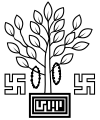



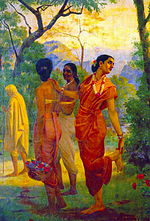
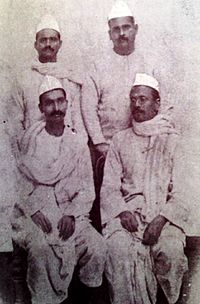









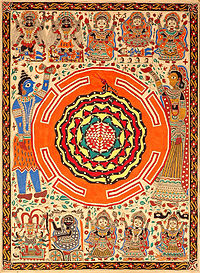
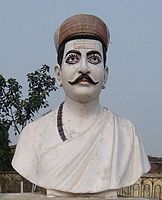




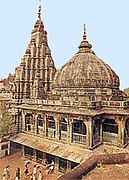



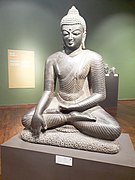


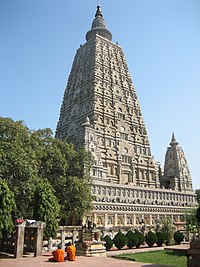
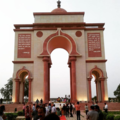








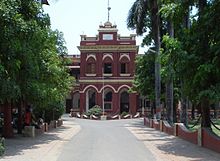
Comments
Post a Comment